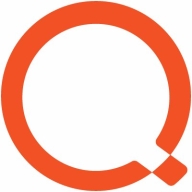

Quest KACE Systems Management Appliance (SMA) and Vicarius vRx compete in the IT management field. SMA appears to have the upper hand in comprehensive endpoint management due to its extensive asset management capabilities, while vRx excels in vulnerability management through advanced patching solutions and automated updates.
Features: Quest KACE SMA includes software deployment, robust asset management, and effective integration with remote assistance tools. It also offers helpdesk support, software inventory, and an efficient patch management system. Vicarius vRx focuses on advanced vulnerability management with features like automated and virtual patching, a single-pane interface for threat handling, and a robust vulnerability discovery and remediation platform.
Room for Improvement: Quest KACE SMA users face scaling challenges and complexity with larger networks and mass deployments. The patch management system needs better integration with non-Microsoft applications, and updates could be simpler. Vicarius vRx faces difficulties with manual patchless protection execution and could enhance automated updates and network device vulnerability management.
Ease of Deployment and Customer Service: Quest KACE SMA supports varied deployment environments, including on-premises and hybrid cloud solutions, offering flexibility but complexity for non-technical users. Its Premier Support is noted for responsiveness, although initial support can be time-consuming. Vicarius vRx's cloud-based deployment simplifies the setup but limits on-premises options. It offers proficient customer service but could improve response times.
Pricing and ROI: Quest KACE SMA is cost-effective for organizations needing extensive asset management, with users reporting a quick ROI due to enhanced automation. However, it may be expensive for smaller companies. Vicarius vRx offers competitive pricing per asset, making it attractive for scaling vulnerability management, with its ROI realized in improved security management efficiency.
The return on investment is seen in the quick access to information, good inventory management, and efficient systems management.
I would rate the customer support for Quest KACE Systems Management Appliance (SMA) as a 10.
The customer service is very good, providing quick customer support in Spanish.
Their support is very good, and they respond quickly.
During the POC and the implementation, they were very available and made their best efforts to help us.
Whenever I've contacted them, they respond promptly with a callback or by email.
The product is very scalable as it supports 10,000 thousand endpoints with just one appliance.
We have outgrown the size of one KACE appliance and are now running two.
It is very simple; you just script it, and then the computers connect themselves.
When we attempted to scale this and update 200 systems, that just locked it.
We have some clients with up to a thousand agents.
There are some issues that they do not even know how to fix at this point.
I would rate the stability of Vicarius vRx ten out of ten.
There are some issues like high CPU usage during updates, but these were fixed.
Currently, we have to go into each org to deploy applications when we need them all across the university.
The user interface needs improvement as customers have mentioned they do not like the interface since it is not an SMA-based interface.
I am pretty sure that the tool works great when it comes to Windows, but when you are in an environment that has different flavors of Linux at different version levels, that may pose an issue.
We have the ability to search across the network for all switches, routers, and printers, but some devices might be outdated and have vulnerabilities.
Enhancing Vicarius vRx with improved third-party integrations, like notifications for external systems, and increased cloud integration for richer instance information, would be valuable improvements.
The pricing is in the middle range of the market, not too expensive but not the cheapest either.
My experience with pricing, setup cost, and licensing for Quest KACE Systems Management Appliance (SMA) is that, hands down, it beat all of the others in simplicity and pricing.
It was very cheap.
In the past, Vicarius vRx was cheap, but now they have adjusted their pricing policy, resulting in higher renewal costs.
From a pricing perspective, Vicarius was cheaper compared to other competitors.
Scripting has saved us hundreds of hours over the years when patching these vulnerabilities compared to how we did it before.
The most valuable features include simplicity, which makes systems management easier and faster, especially for device management.
It's a valuable tool that reduces tension between IT and security teams by providing time to properly install patches.
The system prioritizes vulnerabilities, identifying high, medium, and low risks, allowing us to focus on high-risk applications.
The most valuable feature is the system's ability to provide information about open CVEs and how it compares the local version with available updates.


Quest KACE Systems Management Appliance is a comprehensive tool for managing IT endpoints. It facilitates asset management, software distribution, and endpoint tracking while offering remote access capabilities and a centralized help desk.
Quest KACE Systems Management Appliance is designed for organizations that need efficient endpoint management. It offers a range of features like inventory tracking, automated patch management, and ticketing. By integrating with remote access tools such as Bomgar, Quest KACE helps reduce manual tasks involved in managing software updates and system deployments. Although it faces challenges in scalability and requires improvements in integration and reporting, it remains a versatile choice for asset tracking and endpoint administration.
What are Quest KACE SMA's key features?
What benefits should users consider?
Quest KACE Systems Management Appliance is implemented across industries for managing IT assets and endpoints, particularly where remote management and compliance are critical. It's employed in healthcare, education, and government sectors for efficient patch management, inventory control, and software deployment, aiding organizations in managing security accreditations and centralizing help desk operations.
Vicarius vRx supports managed service providers and partners with compliance packages, vulnerability management, and patching for PCI, HIPAA, and cybersecurity needs, focusing on third-party and OS patching, especially on Microsoft Windows.
Vicarius vRx automates patching, virtualized patching, and severity prioritization through its cloud-based, agent-based approach which enhances consistency and flexibility. It includes patchless protection to block malware in unpatched software and features simplified dashboards for integrated vulnerability discovery and remediation. Users appreciate the user-friendly scripting engine, efficient third-party software patching, and real-time cybersecurity updates. Community support and customizable deployment options further add value. However, users find name changes and login difficulties confusing and report tediousness when configuring multiple reports. Desired improvements include virtual environment for patch testing, enhanced network device vulnerability scans, and better Microsoft Endpoint Manager interactions.
What are the key features of Vicarius vRx?Among managed service providers, Vicarius vRx is implemented for updating systems, showing capabilities to customers in lab environments, and securing endpoints through agent-based patching. These providers use vRx to efficiently manage third-party software patching and to maintain cybersecurity standards across industries.
We monitor all Patch Management reviews to prevent fraudulent reviews and keep review quality high. We do not post reviews by company employees or direct competitors. We validate each review for authenticity via cross-reference with LinkedIn, and personal follow-up with the reviewer when necessary.